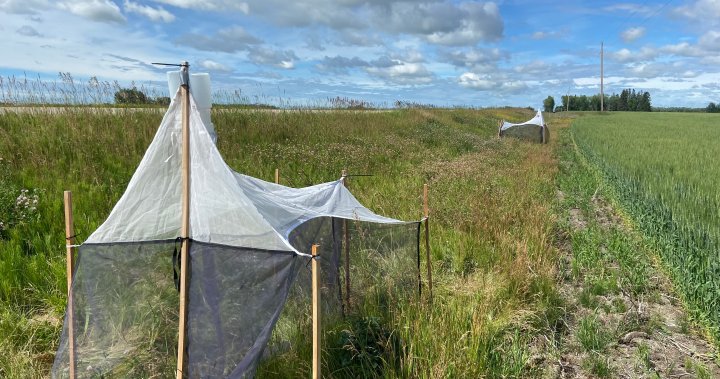Drivers on a number of highways outside Alberta’s capital region are passing bright yellow signs that say “bee study ahead.”
The signs are in 22 places, alerting motorists to University of Alberta masters student Shea Giesbrecht’s research.
Giesbrecht is studying how flowers in ditches and trees along farmers’ fields affect bees and their habits.
The study looks at whether “those two things – (alone) or separately – are really good for bees or not, and how that responds to the presence of highways and cropland,” Giesbrecht said.

Get daily National news
Get the day’s top news, political, economic, and current affairs headlines, delivered to your inbox once a day.
Traps placed behind the signs are used to find out what bugs are in the area and if they’re moving alongside the roads or across them.
Giesbrecht wants to know if, with the right plant life, roadsides can be safe places for the pollinators, instead of putting them in danger from vehicles.
The goal is to give roadside managers and farmers more information so they can create spaces where bees can thrive. Pollinators are critical to crop production.
“Bees overall are in decline, both native bees and also managed bees,” Giesbrecht said.
“Anything we can do to help support these communities is really important.”
The traps will be in place until late August.
Read the full article here


